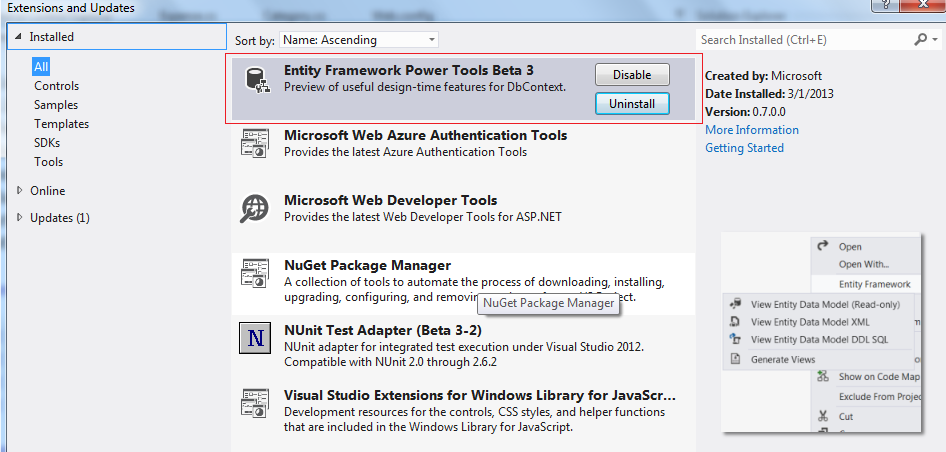

- Dbcontext generator data annotations how to#
- Dbcontext generator data annotations update#
- Dbcontext generator data annotations code#
Dbcontext generator data annotations code#
Plus, ABP system is merely one system in several so there are some database objects that really shouldn't be a part of this code base. So, we are creating several workarounds to get it to play nicely with ABP. Going from an existing database with varying degrees of standards across the tables (primary keys, audit columns) is difficult when coming from an existing database. I am really debating on going back to EF 6 simply to be able to use some T4 templates to generate code.
Dbcontext generator data annotations update#
It's possible but difficult to update the output of that process so we generate them up front, then all changes going forward are done code first.īut, back to my struggle. We generate them once because we have to change them to be ABP entities (Base Classes, Interfaces, etc). Just for reference if anyone wants to know, we are using this to generate entities (we only generate them once): In the example below the final SQL will be different if onlyActive is true or false, or if searchFor is not null.I am actually going through this same process right now and it's a bit cumbersome. Rather than concatenating strings we can 'compose' LINQ expressions. However, sometimes getting all the fields is too wasteful so we want only certain fields, but still use our POCOs something that is challenging for libraries that rely on object tracking, like LINQ to SQL. Most times we get the entire row from the database: from p in db.Product This is required for proper resource management, like releasing the database connections back into the pool ( more details). Make sure you always wrap your DataConnection class (in our case DbNorthwind) in a using statement. We also added convenience properties for Product and Category mapping classes to write LINQ queries.Īnd now let's get some data: using LinqToDB This parameter (called configuration name) has to match the name="Northwind" we defined above as name of our connection string. We call the base constructor with the "Northwind" parameter. Public ITable Category => this.GetTable() Public ITable Product => this.GetTable() Using Connection String Settings ProviderĪlternatively, you can implement custom settings provider with ILinqToDBSettings interface, for example: public class ConnectionStringSettings : IConnectionStringSettings In your web.config or app.config make sure you have a connection string (check this file for supported providers): you can register it in your DI container. It is recommended to create configured DataOptions instance once and use it everywhere. pass configured options to data context constructor ((SqlConnection)cn).AccessToken = accessToken UseSqlServer(connectionString, SqlServerVersion.v2017, SqlServerProvider.MicrosoftDataSqlClient) New connection configuration action to setup SqlClient-specific authentication token: var options = new DataOptions() Minimal configuration example: var db = new DataConnection( You can simply pass connection string into DataConnection or DataContext constructor using DataOptions class.

Related Linq To DB and 3rd-party projects See Github.io documentation for more details.Ĭode examples and demos can be found here or in tests.
Dbcontext generator data annotations how to#
In other words LINQ to DB is type-safe SQL.ĭevelopment version nuget feed ( how to use)


There is no change-tracking, so you have to manage that yourself, but on the positive side you get more control and faster access to your data. However, it's not as heavy as LINQ to SQL or Entity Framework. Your queries are checked by the C# compiler and allow for easy refactoring. LINQ to DB is the fastest LINQ database access library offering a simple, light, fast, and type-safe layer between your POCO objects and your database.Īrchitecturally it is one step above micro-ORMs like Dapper, Massive, or PetaPoco, in that you work with LINQ expressions, not with magic strings, while maintaining a thin abstraction layer between your code and the database.


 0 kommentar(er)
0 kommentar(er)
